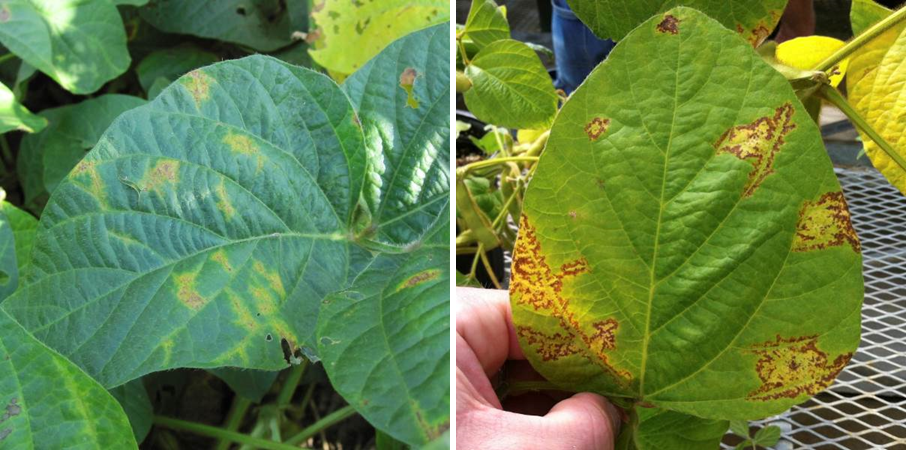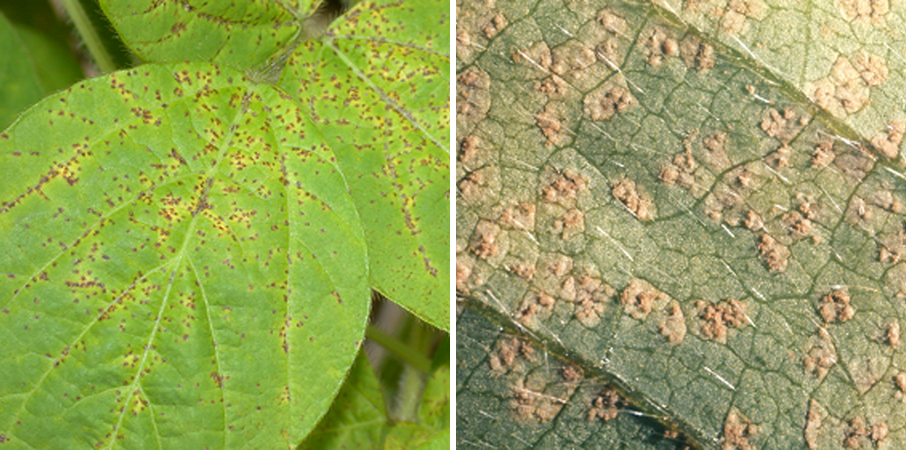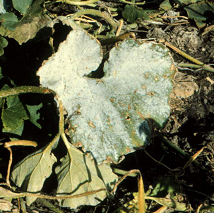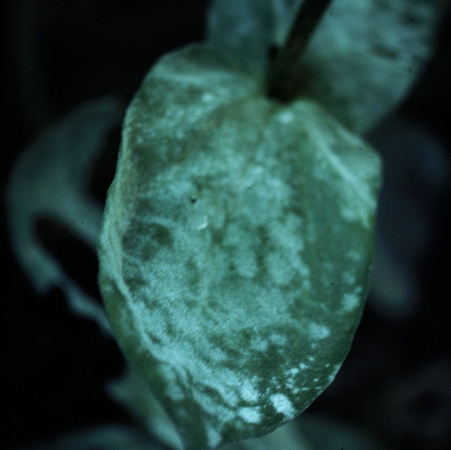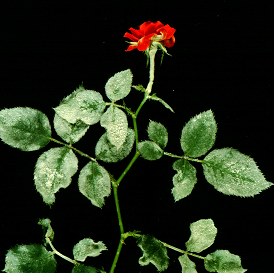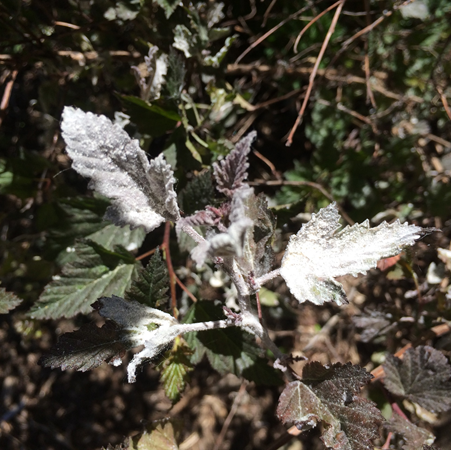What is sudden death syndrome?
Sudden death syndrome (SDS) is one of the most important diseases of soybean in the Midwest. The disease was first observed in Arkansas in 1971, and has subsequently been reported throughout most soybean growing areas of the United States. SDS was first documented in Wisconsin in 2005, and has become more common and severe since that time. The disease is most severe when soybeans are planted into cool, wet soils, and when midsummer rains saturate the soil. SDS often occurs in fields where soybean cyst nematode (SCN) is present.

What does sudden death syndrome look like?
The first noticeable symptoms of SDS are chlorotic (i.e., yellow) blotches that form between the veins of soybean leaflets. These blotches expand into large, irregular, chlorotic patches (also between the veins), and this chlorotic tissue later dies and turns brown. Soon thereafter, entire leaflets will die and shrivel. In severe cases, leaflets will drop off leaving the petioles attached. Taproots and below-ground portions of the stems of plants suffering from SDS, when split open, will exhibit a slightly tan to light brown discoloration of the vascular (i.e., water-conducting) tissue. The pith will remain white or cream-colored. In plants with advanced foliar symptoms of SDS, small, light blue patches will form on taproots and stems below the soil line. These patches are spore masses of the fungus that causes the disease.
Foliar symptoms of SDS can be confused with those of brown stem rot (see UW Plant Disease Facts D0026, Brown Stem Rot of Soybean). However, in the case of brown stem rot (BSR), the pith of affected soybean plants will be brown. In addition, roots and lower stems of plants suffering from BSR will not have light blue spore masses.
Once symptoms of SDS are evident, yield losses are inevitable. Yield losses can range from slight to 100%, depending on the soybean variety being grown, the plant growth stage at the time of infection, and whether or not SCN is present in a field. If SDS occurs after reproductive stages R5 or R6, impact on yield is usually minimal. If SDS occurs at flowering however, yield losses can be substantial. When SCN is present, the combined damage from both diseases can be substantially more than the sum of the damage expected from the individual diseases.

Where does sudden death syndrome come from?
SDS is caused by the soilborne fungus, Neocosmospora phaseoli (synoym: Fusarium virguliforme, Fusarium solani f. sp. glycines). N. phaseoli can overwinter freely in the soil, in crop residue, and in the cysts of SCN. The fungus infects soybean roots (by some reports as early as one week after crop emergence) and is generally restricted to roots as well as stems near the soil line. N. phaseoli does not invade leaves, flowers, pods or seeds, but does produce toxins in the roots that move to the leaves, causing SDS’s characteristic foliar symptoms.
How can I save a soybean crop with sudden death syndrome?
SDS cannot be controlled once plants have become infected. Foliar fungicides and fungicide seed treatments have no effect on the disease.
How can I avoid problems with sudden death syndrome in the future?
Use SDS-resistant varieties whenever possible in fields with a history of the disease. If SDS and SCN are both problems in the same field, planting an SCN-resistant soybean variety may also be beneficial in managing SDS. Avoid planting too early. Wisconsin growers typically prefer to plant soybeans before May 10 to extend the length of the growing season and maximize yields. However, planting when soils are cool and wet makes plants more vulnerable to infection by N. phaseoli. Improve soil drainage by using tillage practices that reduce compaction problems. Rotation, while useful in managing other soybean diseases, does not appear to significantly reduce the severity of SDS. Even after several years of continuous production of corn, N. phaseoli populations typically are not reduced substantially. Research from Iowa State University has shown that corn (especially corn kernels) can harbor the SDS pathogen.
For more information on sudden death syndrome of soybean:
Contact the University of Wisconsin Plant Disease Diagnostics Clinic (PDDC) at (608) 262-2863 or pddc@wisc.edu.
© 2013-2024 the Board of Regents of the University of Wisconsin System doing business as University of Wisconsin-Madison Division of Extension.
An EEO/Affirmative Action employer, University of Wisconsin-Madison Division of Extension provides equal opportunities in employment and programming, including Title IX and ADA requirements. This document can be provided in an alternative format by calling Brian Hudelson at (608) 262-2863 (711 for Wisconsin Relay).
References to pesticide products in this publication are for your convenience and are not an endorsement or criticism of one product over similar products. You are responsible for using pesticides according to the manufacturer’s current label directions. Follow directions exactly to protect the environment and people from pesticide exposure. Failure to do so violates the law.
Thanks to Craig Grau, Mike Rankin and Julie Scharm for reviewing this document.
A complete inventory of UW Plant Disease Facts is available at the University of Wisconsin-Madison Plant Disease Diagnostics Clinic website: https://pddc.qa.webhosting.cals.wisc.edu.
Submit additional agriculture-related questions at https://extension.wisc.edu/agriculture/ask-an-agriculture-question/.

